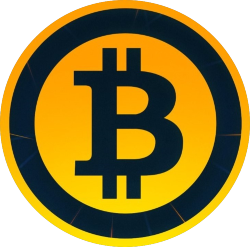The cryptocurrency trading landscape has been rocked by Kraken’s recent launch of perpetual futures contracts for the Pi Network’s native token, PI. This initiative, which allows traders to leverage their positions up to 20 times, is undoubtedly a bold move, but is it a strategic innovation or a precarious gamble? As of May 23, the token was trading at $0.77—a staggering drop of 5.33% over 24 hours—indicating a lack of positive momentum despite this leap into derivatives. The move raises an essential question: are we witnessing a harbinger of institutional interest or an invitation to rampant speculation that engulfs the token in chaos?
The Illusion of Control
One of the most significant concerns with the introduction of these perpetual contracts lies in their ability to allow investors to speculate on PI’s price without owning the asset. This separation creates an illusion of control, where traders can engage with the market yet remain disconnected from the underlying technology’s effectiveness and viability. The excitement of diversifying into over 360 trading markets on Kraken Pro sounds enticing, yet it blurs the line between informed investment and reckless speculation. The fact that the token’s governance is still heavily dominated—roughly 60% by the core team—further complicates the narrative, making it harder for average traders to trust in its potential for decentralization.
Volatility: The Double-Edged Sword
Kraken’s foray into PI futures may indeed increase liquidity, but the fine line between increased activity and chaotic volatility is a concern that should not be brushed aside. The perpetual nature of these contracts means that traders can hold positions indefinitely, subject to funding rates. While this could create opportunities for sophisticated traders, it equally invites a potential disaster; liquidations on both long and short positions can lead to wild price swings. The network has already displayed a penchant for volatility, recently witnessing a sharp decline from over $1.50 to its current state—a 50% depreciation as compared to overall market trends.
Geopolitical and Regulatory Shadows
The landscape is further muddied by geographical factors. With a notable concentration of validator nodes in Vietnam, where stricter regulations loom, operational risks abound. As upcoming legislation tightens the grip on cryptocurrency operations, the fear of impending doom for Pi’s decentralization goals becomes palpable. This regulatory environment doesn’t just threaten the sustainability of Pi Network but also poses a hefty risk for traders, who may find their investments jeopardized on the whims of policy changes that are difficult to anticipate.
The Illusory Vortex of Bearish Sentiment
As bearish sentiment grips the market, it could foster an environment where short-sellers effectively capitalize on negativity, unleashing a cascade of volatility that amplifies the dangers of leveraged trading. While Kraken’s listing has, on the surface, increased visibility for Pi Network, it has also convoluted a trading environment that is ripe for exploitation. This duality of increased attention coupled with heightened risk could push uninformed investors toward devastating losses, forever altering their perception of cryptocurrency trading as a whole.
In a world distressed by declining trust and increasing regulatory scrutiny, this launch may well serve more as a breeding ground for upheaval than as a beacon of hope for the Pi Network.


















